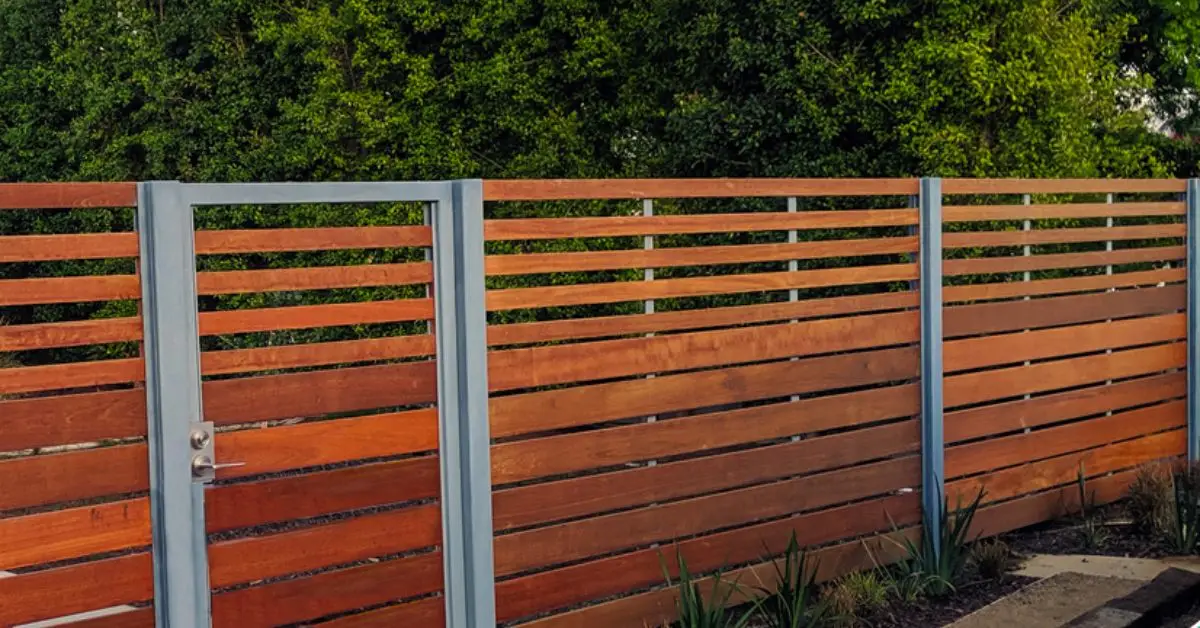How to Avoid Fence Disputes with Neighbors Over Property Boundaries
Until something like a new fence makes it an issue, you never truly consider where your property stops.
I’ve witnessed neighborly relationships deteriorate over a small plot of property. What began as a straightforward improvement turns into a legal nightmare or years of icy glances across the driveway when one person installs a fence and the other feels it goes too far.
The majority of fence disagreements, in actuality, aren’t about the fence. They have to do with communication, presumptions, and ambiguous emotional and physical limits.
This guide will show you how to prevent those hassles in nine polite, legal, and straightforward methods. You’re in the proper place if you want to be sure your current layout won’t cause problems or if you intend to install or replace a fence.
And suppose you and your neighbor have already had a heated argument? Don’t worry, we’ll discuss how to deal with that as well.
Let’s discuss how to maintain both your fence and your peace with your neighbors.
What boundary problems have you recently observed in your neighborhood?
1. Understand Your Property Boundary Accurately
Let’s talk about something that most people overlook: where your property truly ends, before you even consider fence colors or materials. Although it may seem apparent, I have witnessed neighbors file lawsuits over fences that were constructed only six inches too far in any direction.
1.1 Check your property deed, plat, and title records
The classic misconception that you’re always on the left side? False. Your documents are the sole true authority in this situation.
Boundary lines will typically be clearly visible in your property’s deedorland survey. A T symbol that indicates who is in charge of maintaining which side of the fence may be shown on the plan if you’re in the UK. Similar information can be found in title reports or plat maps in the United States.
Avoid making assumptions. Verify. Like these things, it’s the kind of minor detail that many people miss before completing a real estate transaction.
This is explained in depth by the Texas Real Estate Research Center, specifically for those who are purchasing or selling a house close to a shared fence.
Why this matters: Your neighbor has the legal right to evict you from whatever land you build on, even if it’s just by accident. That is a loss of reputation, money, and time.
1.2 Hire a boundary surveyor if you re unsure
A professional boundary surveyor should be hired if your records are outdated, ambiguous, or contradict your neighbor’s opinion. Expect to pay between $500 and $2,000, so it’s not cheap, but if it saves a $10,000 court battle, it’s worth every penny.
A useful summary of when surveys are required and what they cover can be found at Better Homes & Gardens.
A thorough study reduces the amount of space your neighbor has to fight and provides you with tangible, convincing evidence of where your fence can go.
You’re defending your legal rights with verifiable proof, not merely erecting a fence. Here’s how to pick the ideal fence that strikes a mix between longevity, style, and community appeal after you’ve established your boundaries.
2. Follow Local Regulations and Fence Etiquette
You’ve determined the boundaries of your property. Fantastic. The part that most people overlook is this: etiquette and local laws.
Many fence disagreements aren’t caused by unpleasant or petty people; rather, they’re the result of someone not checking the law or thinking, “It’s my yard, I can do what I want.”
That way of thinking quickly becomes costly.
2.1 Know the zoning laws, HOA rules, and permit requirements
Check with the county or city office in your area before putting a single post in the ground. There are height restrictions in several places. Others mandate that you maintain a specific distance from the property boundary or sidewalk. Additionally, you could require design clearance if you belong to a homeowners association.
Here’s a typical one: a building permit is required in many cities for any fence that is more than two meters (6.5 feet). If you omit that procedure, the city may require you to demolish the entire structure.
Furthermore, nobody wants to waste money in that way, let’s face it.
Being aware of the regulations keeps you out of trouble and safeguards your investment. You can avoid a lot of worry later by doing a little study now.
2.2 Don t build a spite fence
Stop there if you’re erecting a fence just to obstruct a view, irritate your neighbor, or convey a message.
For many years, courts have prohibited these kind of fences. You could be forced to remove something that is obviously intended to harass or penalize someone, even if it is technically on your property. And they’ll call you that neighbor.
Furthermore, it is not worth the power trip to live next door to someone who is tense.
Respect is really important. A fence should provide you with seclusion and tranquility rather than turning into a battlefield.
3. Start with Open, Proactive Communication
This straightforward guideline might stop 90% of fence drama:First, speak with your neighbor.I’m referring to having a conversation before making any decisions, purchasing any supplies, and most definitely before construction begins.
A formal sit-down is not required. Simply approach them, share your plans, and solicit their opinions. Describe your budget, the kind of fence you are thinking of getting, and whether you want to split the cost. Keep it concise but unambiguous.
The majority merely desire inclusion. Additionally, individuals are far more inclined to comply or at the very least refrain from protesting later when they feel valued.
Southern Living makes a really good point here: it’s polite to ask first, even if you don’t legally require their consent.
Nowadays, open communication fosters trust, prevents misunderstandings, and frequently results in mutually beneficial solutions.
4. Agree on Cost-Sharing from the Start
Fence projects might quickly become difficult due to financial constraints.
It is frequently assumed that both parties will pay for the fence if it is on the boundary line. But what s fair can mean very different things to different people. While one neighbor may like handcrafted cedar with a fancy top rail, the other may be considering inexpensive panels.
Thus, establish clear expectations from away. Describe what constitutes a suitable fence. Get quotes. Decide on a budget. And most importantlyput it in writing, even if it s just a simple letter or email both of you agree to.
AsRNZ notes, even informal agreements can hold weight in boundary disputes and show you acted reasonably. Clarifying money details upfront protects your wallet, your rights, and your relationship with the neighbor.
5. Formal Notice if Informal Agreement Fails
Sometimes, no matter how politely you ask or how clearly you explain things, your neighbor just won t budge. When that happens, you may need to take a more official route.
5.1 Sending a fencing notice (if needed)
In many regions especially places like New Zealand or parts of the U.S. there s a formal process for giving notice when you want to build or replace a shared fence. This is typically called afencing notice.
It s a written document that includes the proposed design, materials, estimated cost, who s paying for what, and when the work will happen. It also gives your neighbor a chance to objectusually within 21 to 30 days.
If they don t respond in time, you can often proceed. If they do object, it opens the door for formal negotiation or mediation.
A fencing notice isn t about being aggressive it s about protecting your legal rights and making sure there s a paper trail if things go sideways.
5.2 Receiving & responding to a cross-notice
If your neighbor doesn t agree with your proposal, they can respond with what s called across-notice. This might include a different design, budget concerns, or a counter-offer on how to split costs.
Even if you disagree, you re now in a structured process which is way better than a shouting match over the fence line.
Written objections keep things formal, respectful, and less likely to escalate into a legal fight.
6. Use Neutral Conflict Resolution If Needed
If even the formal notice process doesn t help, don t rush into court. There aresimpler, less confrontational waysto resolve fence disputes that can save you both money and long-term resentment.
Mediation and arbitration are common first steps. These involve a neutral third party helping you and your neighbor come to an agreement. In some cases, local tribunals or small claims courts are also an option and they re far less intense than full-blown litigation.
The key here ispreserving the relationshipas much as possible. Because no matter how this plays out, you still have to live next to each other.
Neutral conflict resolution keeps things civil, saves legal costs, and often gets you to a better outcome faster than court ever could.
7. Prevent Future Disputes with Co ownership Standards
Once a fence is up, it s easy to forget about it until something breaks, leans, or starts to look rough.
That s why it s smart to treat the fence like a shared project from day one. When rebuilding or replacing a boundary fence, sit down with your neighbor and preview the design, color, and materials together. It doesn t need to be formal just a shared understanding of what works for both sides.
Also:agree on who handles maintenance. Will you both check it once a year? Split the cost of future repairs? Keep a quick note or email thread that confirms it. That tiny bit of planning now saves you from having the same argument five years later.
Shared expectations = fewer surprises. And fewer surprises = fewer arguments.
8. Special Situations: Emergencies, Tree Encroachment, Damage
Not all fence issues are planned. Sometimes a storm, a falling branch, or a burst of wind changes everything overnight.
8.1 Emergency repairs
If a fence collapses suddenly say, from a storm or accident you usually have the right to makeemergency repairswithout formal notice. That said, you should still inform your neighbor as soon as possible, especially if you re expecting to split costs later.
Document the damage with photos and receipts. Most reasonable neighbors will understand once they see what happened and how fast you acted.
8.2 Overhanging trees or vegetation damage
This is one of the sneakier causes of fence disputes. Roots growing under the fence. Branches leaning over. A tree falling just slightly the wrong way.
Legally, theowner of the vegetationis typically responsible if it damages a shared fence. But that can get messy fast especially if there s no proof.
If damage happens, take clear photos, write a short report, and try to talk through it calmly before escalating.
Most of these problems are easy to solve when caught early but they turn ugly fast if ignored or handled aggressively.
9. Add Value by Building Goodwill & Long Term Harmony
Not every fence decision has to be about avoiding problems. Sometimes, it s about creating something better together.
Want to keep the peace long-term? Offer small things that show goodwill: give your neighbor the nicer side of the fence, add a shared planter, or offer to put in a gate that benefits both yards.These aren t obligationsthey re gestures. But they go further than you think.
Even after the fence is built, keep in touch. Check in once in a while about maintenance, repairs, or concerns. That informal connection is what turns neighbors into allies.
A fence doesn t have to divide you. It can actually bring a sense of mutual respect if you build with that in mind.
Final Takeaways
Let s keep it simple:
-
Know your boundaries
literally. -
Talk before you build
don t let assumptions become arguments. -
Check the rules
permits, height limits, and notices protect everyone. -
Put it in writing
even if it s just a short email. -
When in doubt, stay respectful
mediation beats legal war. -
And above all, act like someone who plans to live there for a while.
Because you probably will.
At the end of the day, fences aren t just about privacy they re about trust. The more care you put into the process, the more peace you ll have afterward.
Have you ever had a fence-related misunderstanding with a neighbor? How did you handle it or how do you wish you had?Let s talk in the comments.
For more tips on smart home upgrades, fence planning, and property solutions, visitBuild Like New.Or check out thesesummer home upgradesthat instantly improve your curb appeal without breaking the bank.
Disclaimer:This article is for informational purposes only and does not constitute legal or professional advice. Property laws, fence regulations, and neighbor rights vary by region. Always consult with a qualified local surveyor, real estate attorney, or relevant authority before starting any construction or boundary-related project. Build Like New is not responsible for any actions taken based on this content.
Table of Contents
-
1. Understand Your Property Boundary Accurately
-
1.1 Check your property deed, plat, and title records
-
1.2 Hire a boundary surveyor if you re unsure
-
-
2. Follow Local Regulations and Fence Etiquette
-
2.1 Know the zoning laws, HOA rules, and permit requirements
-
2.2 Don t build a spite fence
-
-
3. Start with Open, Proactive Communication
-
4. Agree on Cost-Sharing from the Start
-
5. Formal Notice if Informal Agreement Fails
-
5.1 Sending a fencing notice (if needed)
-
5.2 Receiving & responding to a cross-notice
-
-
6. Use Neutral Conflict Resolution If Needed
-
7. Prevent Future Disputes with Co ownership Standards
-
8. Special Situations: Emergencies, Tree Encroachment, Damage
-
8.1 Emergency repairs
-
8.2 Overhanging trees or vegetation damage
-
-
9. Add Value by Building Goodwill & Long Term Harmony
-
Final Takeaways
-
1.1 Check your property deed, plat, and title records
-
1.2 Hire a boundary surveyor if you re unsure
-
2.1 Know the zoning laws, HOA rules, and permit requirements
-
2.2 Don t build a spite fence
-
5.1 Sending a fencing notice (if needed)
-
5.2 Receiving & responding to a cross-notice
-
8.1 Emergency repairs
-
8.2 Overhanging trees or vegetation damage




